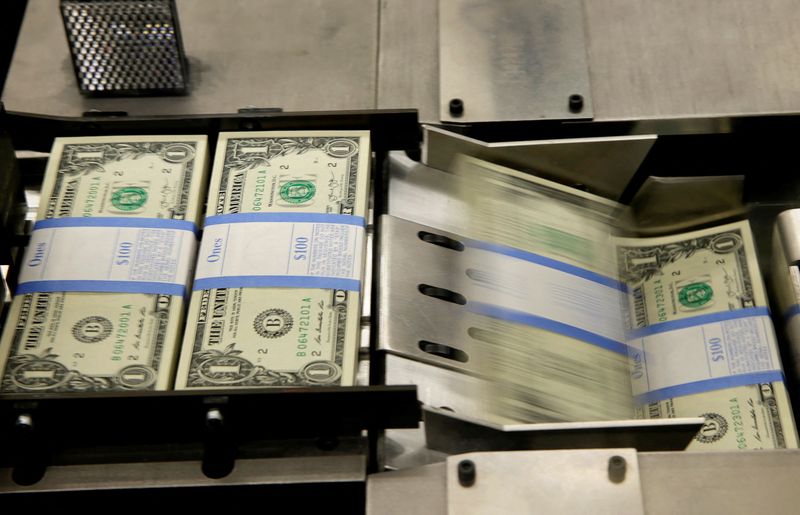By Shankar Ramakrishnan
(Reuters) - When U.S.-based construction material supplier Wilsonart issued a junk bond to raise $500 million to fund an acquisition this summer, a research firm warned potential investors that the terms of the deal offered them weak protections.
The bond’s covenants would allow the company to potentially move valuable assets to a different entity later and raise even more money, putting the investors in the bond at a disadvantage, the research firm, Covenant Review, wrote in a review seen by Reuters.
The warning came against the backdrop of growing worries in credit markets after an increasing number of companies have used similar weaknesses to borrow more against the same assets, in a practice euphemistically called a liability management exercise.
That has favored some creditors over others, a result that’s come to be known as creditor-on-creditor violence. Things have become so bad this year that some creditors have been banding together to fight back.
So, what did investors do in the case of the Wilsonart offering after the warning? They lapped it up.
Wilsonart did not respond immediately to a request for comment.
Wilsonart’s ability to raise the money highlights a paradoxical trend in U.S. credit markets: while investors are suffering the consequences of weak covenants, they are letting a vast majority of companies sell them new paper with the same flaws without significant pushback, credit market bankers, lawyers and investors said.
The reason, these market sources said, is lack of enough supply of junk-rated bonds and the need to lock in higher yields before the Fed begins to cut interest rates as well as diverging interests between the biggest creditors and small investors.
"Investors have a tough choice to make: Do I sit in cash and not buy a bond or loan because of looser documentation and thereby risk hitting my return hurdles," said Peter Toal, global head of fixed income syndicate at Barclays. Toal said the lack of supply was in part because most of the borrowing now has been to refinance old debt.
Several bankers and analysts estimated 90% of high-yield bonds and loans that are coming to the market now are being sold with weak investor protections despite growing concern that stressed companies were taking advantage of them to raise fresh funds to repay maturing debt or simply remain solvent.
More than 90% of the Morningstar LSTA Leveraged Loan Index is now "covenant-lite" or lacking maintenance covenants, a metric that has increased sharply since the financial crisis of 2008, a Barclays research report shows.
Liability management exercises (LMEs) come in many forms, but the most common tactic is for the company to transfer valuable assets into a subsidiary. That subsidiary then raises debt in a side deal from some old and new investors. The cash is then forwarded back to the parent as an intercompany loan.
The side deal gives the new creditors a priority claim on the company’s assets in case of a bankruptcy, pushing existing investors down the line, increasing their potential losses in the event of default.
High-yield bonds and loans bought by investors make their way into funds that are then sold to retail and large institutional investors who, as a result of weaker covenant protections and covert LMEs, may end up facing losses or underperformance of their investments.
DISTRESSED EXCHANGES
So far in 2024, 28 companies have completed a distressed exchange, totaling $35 billion, the second-largest total on record, according to JPMorgan. Their numbers are expected to only grow.
Moody’s has said some 13.5% or $400 billion of the more than $3 trillion junk-debt rated by it is at a high risk of default over the next 12 months, with a bulk structured with little or no guardrails to prevent liability management exercises.
Investors are being forced to consider ways to improve their claims on a company’s assets. Many creditors have been entering into cooperation agreements, or private legal pacts, to increase their ability to negotiate and keep rivals from signing side deals without their knowledge, bankers and lawyers said.
Steven Oh, global head of credit and fixed income at asset management firm Pinebridge Investments, said investors were caught in a "classic prisoner's dilemma."
“Do the side trade with the company and enhance your own interests or align with others and prevent someone else from doing a deal with the company," Oh said.
In some cases, investors are also pushing back on the documentation, refusing to buy new debt unless the borrower agrees to include clauses that stop it from short-changing existing creditors. Moody’s noted in April that Thryv and two other borrowers faced such pushback.
Nevertheless, the market sources said such pushback was still rare. It was again on display in early September, when Clayton, Dubilier & Rice (CD&R) through Fiesta (NASDAQ:FRGI) Purchaser marketed a $400 million junk-rated bond.
Covenant Review again issued a market alert urging investors to reject the legal provisions included in it as it would take the company’s ability to issue debt through a subsidiary to a “nonsensical extreme.”
A few days later it pointed out the same flaw in a new $700 million bond by Focus Financial Partners (NASDAQ:FOCS) but after both bonds were subsequently upsized and priced on September 9 and 10, it noted the language may have been changed.
CD&R declined to comment and Focus Financial did not respond to a request for comment.

Scott Josefsberg, Covenant Review’s head of high-yield research, said the changes showed if investors are willing to push back hard, covenant protection can be improved but it was a long road ahead to a major overhaul.
"A vast majority of bonds and loans have no guardrails against LMEs, and they are easily sold," Josefsberg said.